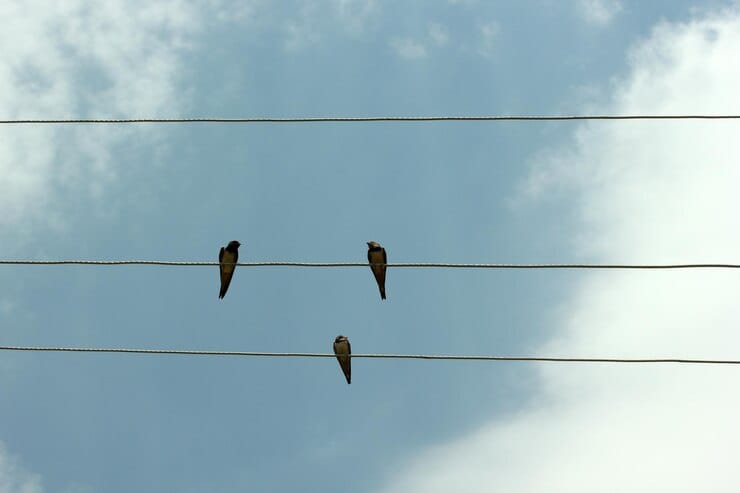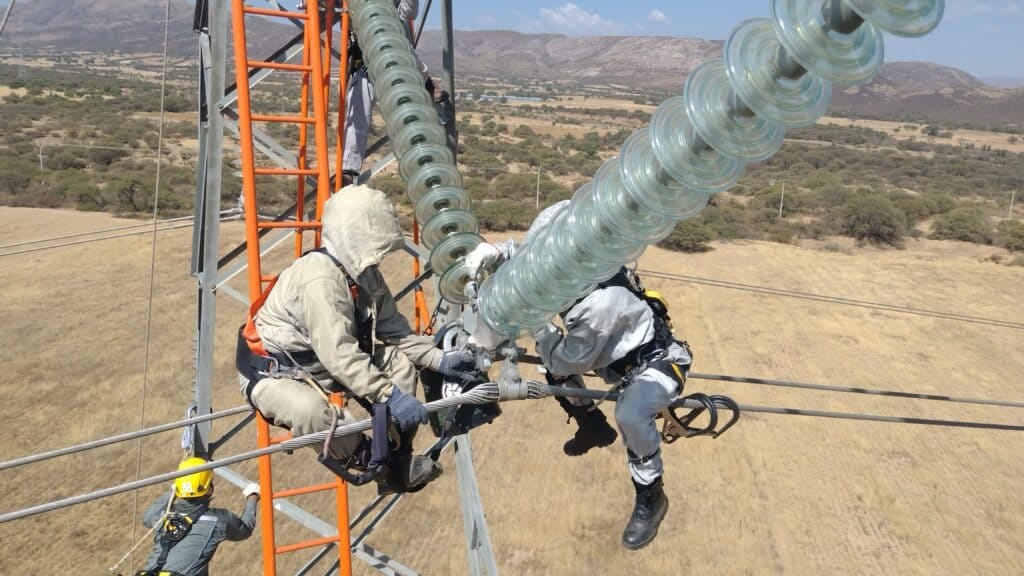When walking down the street, it is common to see animals such as small primates or birds walking or perching on power lines without suffering any damage. This arouses the curiosity of many: why doesn’t the bird die when it lands on the energized cable? This question is an excellent opportunity to understand important principles that also apply to Live Line works in the Barehand Method.

The physics behind the phenomenon
The answer lies in the basic physics of electricity. For an electric current to flow, there must be a potential difference between two different points. Current flows whenever there is a potential difference (Voltage) between two points, and follows the path of least resistance.
When a bird perches on a high-voltage wire, its entire body is at the same electrical potential as the wire. At this point, the bird becomes a natural extension of the wire. It becomes equal to the potential of the circuit. Since the bird’s legs are small relative to the conductor, there is practically no potential difference in its body. Therefore, the current flowing through the bird is negligible, since the path of least resistance is the conductor.
The problem consists in the bird touching at the same time two points with different potentials, such as an energized wire and a grounded object, or two different phases. In this way, it will create a path with a potential difference. In this case, the best path for the current will be the bird because it now offers less resistance. A considerable current will then flow through its body, causing an electric shock to the small animal.
And what about the Live Line Working?
This same explanation applies directly to professionals working in Live Line maintenance. One of the methods used in this methodology is the Barehand Method, closely related to the previous phenomenon.

In the Barehand Method, the professional performing the maintenance remains at the same electrical potential as the circuit he is working on, similar to a bird perching on a wire. This principle is identical to that which keeps birds safe. The worker, like the bird, is not under a potential difference that would cause a considerable current to pass through his body.
Specialized equipment, such as conductive clothing, allows the lineman to match the potential of the system without feeling the effects of the electric field caused by the energized cable, such as tingling sensations, cauterizations, burning, tinnitus and other discomforts.

Good practices
These principles are fundamental to understand the safe work on Live Line in the Barehand Method. To ensure the safety of workers on energized transmission lines, it is essential to follow these practices:
- Correct use of PPE: The correct use of conductive clothing, among other equipment, is essential to ensure safety and productivity in live working.
- Ongoing training: Practitioners must be trained not only to understand the science behind the procedures, but also to apply them safely in the field.
- Periodic recertification: Keeping the team updated and certified in the work methodology is essential to ensure that they are always prepared to operate safely and efficiently.
If your company wants to ensure that its employees are trained to operate safely on energized distribution networks or transmission lines, it is essential to invest in specialized training. At CTST we follow the philosophy of protecting the lineman’s life, the continuity of the system and the safety of your company. Contact us for more information on our portfolio of Live Line training and recertification courses.
See more technical articles.

